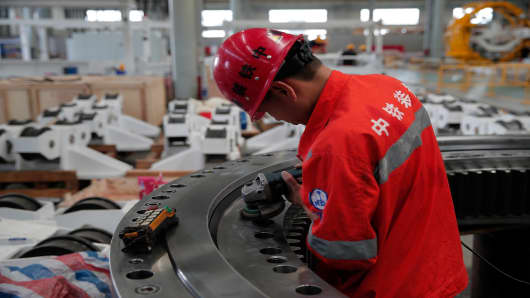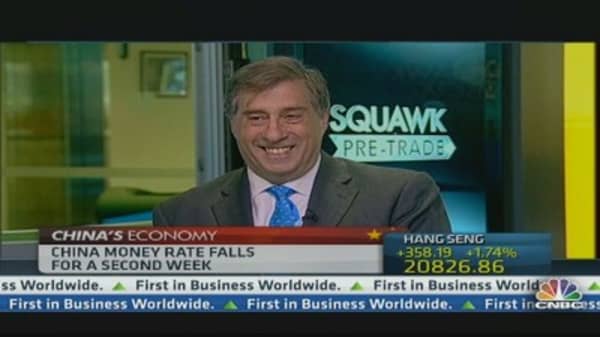A slowdown in China and a pullback in liquidity from the U.S. will negatively impact growth in Asia as the region tries to cope without the boost provided by these two, says HSBC.
On Tuesday, the bank cut its gross domestic product (GDP) growth forecast for Asia ex-Japan from 7.2 percent to 6.1 percent for this year, while growth in 2014 was downgraded from 7.2 percent to 6.5 percent.
"After several years of roaring growth, fueled by cheap cash, central bankers in China and the U.S. sent a shiver through the region," Frederic Neumann, co-head of Asian economics research at HSBC said in a note. "Rates in the U.S. are on their way up as prospects of tapering move closer. In China, the spike in money market rates, even if temporary, signals the determination by officials to at least skim the froth off the top."
(Read More: Marc Faber: China Puts Global Markets at Risk)
A record liquidity crunch in China's money markets in late June lead the short-term borrowing costs to spike close to 30 percent as the central bank sent a message to overstretched banks that it was determined to bring risky lending under control.
In light of this, Asia's credit dependence has been "painfully exposed," according to Neumann, who says the region's governments need to deliver "far-reaching and politically unpalatable reforms" and until that's done, economic growth will suffer.
"To secure Asia's bright prospects and keep capital tied down, structural reforms are urgently needed. These, to be sure, are difficult to deliver," Neumann said. "Political obstacles abound. But, without them, Asia may not sustain its impressive run of recent years."
(Read More: China Remains Stuck in Decline, Data Will Show)
GDP growth for Asia ex-Japan in 2010 was 9.4 percent, followed by 7.4 percent in 2011 and 6.2 percent in 2012. But, this year could mark the slowest GDP growth rate in three years at 6.1 percent, according to HSBC's forecast, which is below market consensus of 6.5 percent.
Evidence that Asian economies have already been severely impacted by the prospect of the U.S. Federal Reserve tapering its monthly $85 billion bond purchases can be seen in the withdrawal of capital from the region's currencies, equities and bonds.
Data from fund tracker EPFR Global showed investors pulled out a record $10 billion from emerging markets debt and equity funds in the week to June 28, Reuters reported.




